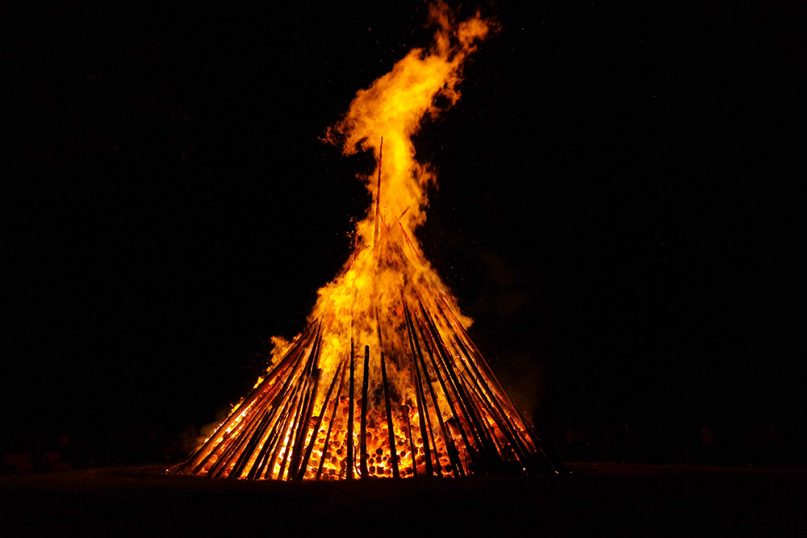The damage done under Trump must be expeditiously reversed under the incoming administration, including any regulations rammed through in these final weeks.
by Cathy Liss

When it comes to our nation’s beloved wild horses, the Trump administration has called for accelerated mass roundups to remove these animals from their natural habitats on public lands to placate ranchers, who view them as competition for grazing. (Photo By Joe Amon/The Denver Post via Getty Images)
As a year marked by constant chaos draws to a close, all of us have been forced to confront the stark reality that the fate of humanity is inextricably intertwined with the well-being of the natural world.
The Trump administration has pushed for environmental decimation and biodiversity loss through more than 100 regulatory rollbacks primarily intended to benefit industry special interests.
A rapidly changing climate continues to bring severe storms, fires and droughts. A burgeoning wildlife trade, as well as mining, oil and gas exploration, logging, and land grabs for agriculture is destroying wildlife habitat at an unprecedented rate and has brought us even closer to wild animals and the pathogens they harbor, such as COVID-19. This is a critical moment to enact bold and innovative policies; the ramifications for humanity will only become more catastrophic if we continue to exploit the natural world in such an unsustainable manner.
Against this dire backdrop, the Trump administration has pushed for environmental decimation and biodiversity loss through more than 100 regulatory rollbacks primarily intended to benefit industry special interests. And with one month left in his term, the president shows no signs of reversing course.
Over the last four years, this administration has radically weakened two bedrock laws, the Endangered Species Act and the National Environmental Policy Act, which protect species facing extinction and require federal agencies to evaluate the environmental effects of their actions. After denying federal protections to 70 species, the Department of the Interior proposed a rule this year that would redefine the word “habitat” to limit the government’s ability to conserve species that may require habitat restoration or whose historic range has shifted as a result of climate change. Another rule finalized last week grants economic considerations outsized weight in government decisions about whether to protect habitat that is vital to species recovery.
Additionally, the Interior Department has proposed a rule change that flouts the century-old Migratory Bird Treaty Act by allowing companies to escape legal responsibility for actions that kill millions of migratory birds each year. The final rule, which is open for public comment through Dec. 28, permits activities that are not intended to harm birds yet directly affects them, such as filling in wetlands and discharging toxic water into ponds.
The administration has also attempted to greenlight oil exploration in the Arctic National Wildlife Refuge with an insufficient environmental review and a rushed regulatory process, posing unacceptable risks to approximately 900 polar bears left in the Arctic, to other species and to the environment. Under the proposal, companies would be permitted to use seismic testing, which disturbs polar bears in their dens and disrupts wildlife behavior patterns, such as migration, nursing and feeding. If the administration continues to steamroll this process, leases will likely be finalized before Inauguration Day, leaving President-elect Biden with limited options for recourse.
When it comes to our nation’s beloved wild horses, the Trump administration has called for accelerated mass roundups to remove these animals from their natural habitats on public lands to placate ranchers, who view them as competition for grazing. To “manage” wild horse populations, the Bureau of Land Management (BLM) — an agency under federal mandate to protect wild horses from harassment and death — continues to aggressively pursue an outdated, invasive, and unsafe surgical sterilization procedure that carries significant welfare risks.
The lame duck administration may also attempt a significant rollback of the protections afforded by the landmark 1971 Wild Free-Roaming Horses and Burros Act. Last summer, the BLM announced it was preparing a rule to “streamline” the agency’s authority to manage wild horses. While the agency has not yet released specifics, the rule would likely make it easier for the BLM to permanently remove horses via brutal helicopter roundups and to sell off wild horses to interested buyers at bargain bin prices. Although wild horses are explicitly protected from slaughter under language in annual congressional spending bills, they regularly slip through the cracks since there is no effective way to track their movements after they are sold. Lamentably, as the BLM’s acting director, William Perry Pendley, remarked, wild horses are viewed as an “existential threat” to be removed from the landscape.
An administration that ignores—and even accelerates—the tragic consequences of wildlife exploitation is a poor fit for this moment in history. The damage done under Trump must be expeditiously reversed under the incoming administration, including any regulations rammed through in these final weeks. However, simply rolling back the clock is not enough to protect disappearing wildlife. We are running out of time to alter our destructive behaviors. The Biden administration must act swiftly to address our planet’s ecological emergency, but we must all do our part by learning to coexist more responsibly with the natural world.
















